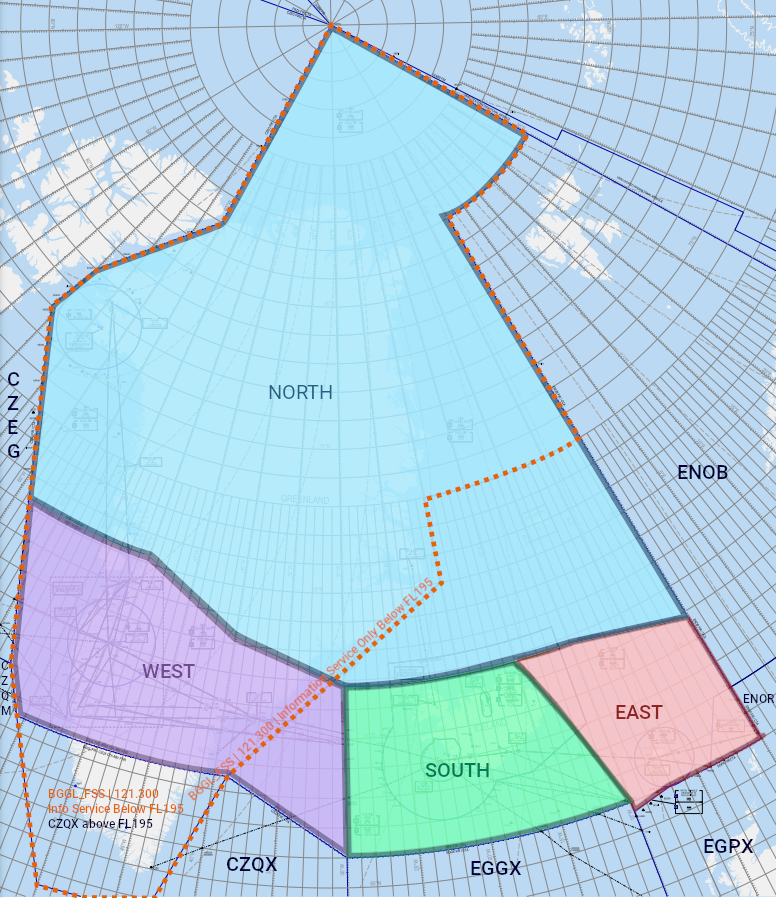General
Full List of ATS Positions
|
Coordination Name |
VATSIM Logon |
Radio Callsign |
Frequency |
|
South 1 (S1) |
BIRD_S1_CTR |
Reykjavik Control |
119.700 |
|
South 2 (S2) |
BIRD_S2_CTR |
125.700 |
|
|
South 3 (S3) |
BIRD_S3_CTR |
128.600 |
|
|
East 1 (E1) |
BIRD_E1_CTR |
126.750 |
|
|
East 2 (E2) |
BIRD_E2_CTR |
132.200 |
|
|
East 3 (E3) |
BIRD_E3_CTR |
128.800 |
|
|
West 1 (W1) |
BIRD_W1_CTR |
124.400 |
|
|
West 2 (W2) |
BIRD_W2_CTR |
127.500 |
|
|
West 3 (W3) |
BIRD_W3_CTR |
128.200 |
|
|
North 1 (N1) (EVENT ONLY) |
BIRD_N1_CTR |
133.100 |
|
|
Radio 1 (CC1) |
BICC_1_FSS |
Iceland Radio |
127.850 |
|
Radio 2 (CC2) |
BICC_2_FSS |
126.550 |
|
|
Radio 3 (CC3) (EVENT ONLY) |
BICC_3_FSS |
129.625 |
Login Priority
Reykjavik Control (BIRD_**_CTR)
South 1 (BIRD_S1_CTR) may be opened at any time. All other BIRD positions may only be opened after South 1 has been opened (except if South 2 and South 3 are being opened at the same time.)
Iceland Radio (BICC_*_FSS)
Radio 1 (BICC_1_FSS) may be opened at any time. All other BICC positions may only be opened after Radio 1 has been opened. See the Iceland Radio page for more information.
Sectorization
The Reykjavik CTA is divided into four lateral sectors: North, South, East, and West.
Bandboxing
The South sector positions (S1 / S2 / S3) bandbox the East & West sectors when no controllers are online for those sectors.
Dynamic Vertical Splits
Each sector may be dynamically split up vertically to three times to increase traffic capacity, following these rules:
- When two sector splits numbered 1 & 2 are online, they shall split the sector at FL345 (split 1 is lower, 2 is higher.)
- When two sector splits numbered 1 & 3 are online, they shall split the sector at FL355.
- When two sector splits numbered 2 & 3 are online, they shall split the sector at FL365.
- When three sector splits (1, 2, and 3) are online, sector no. 1 covers up to FL345, sector no. 2 from FL345-FL365, and sector no. 3 from FL365+.
Bandboxed Splits
If there are multiple South sectors online, but no East or West sectors are online, the South positions shall split the South, East, and West sectors at the same level.
- For example, if South 1 and South 3 are both online, then they would bandbox the South, East, and West sectors and split them all at FL355.
- However, if East 1 were then to come online, they would take over the entire East sector top to bottom, and South 1/South 3 would continue to bandbox the South and West sectors, splitting at FL355.
Top-Down
Whichever Reykjavik Control position covers the lowest vertical levels also covers all local (aerodrome, approach, etc.) positions in that sector top-down. For specific aerodrome top-down coverage for each respective sector, see their individual pages.
Oceanic Procedures
All aircraft in Reykjavik OCA must follow oceanic procedures. See the Oceanic Area Control SOP for details.

